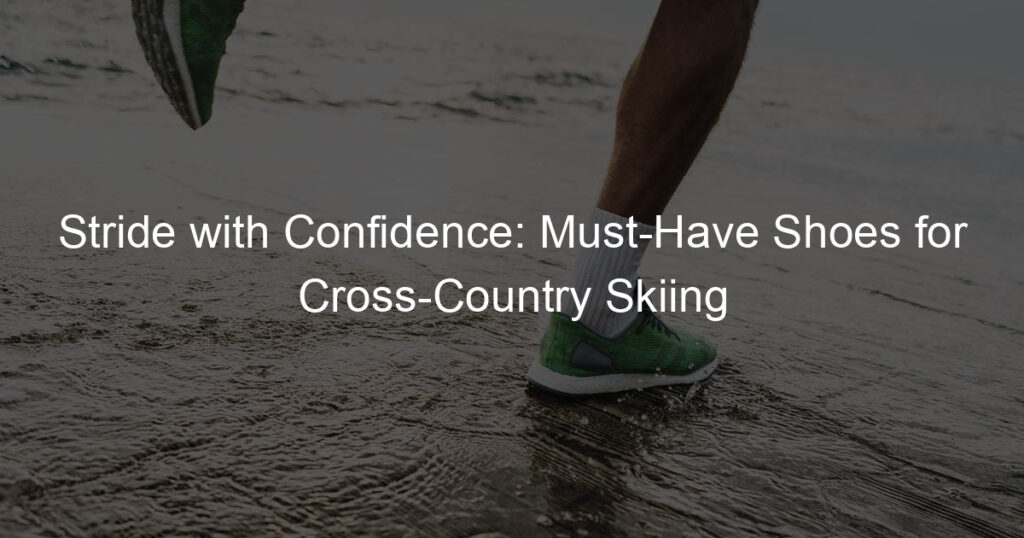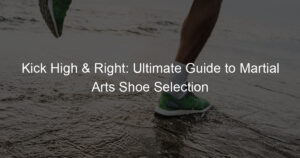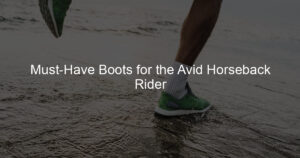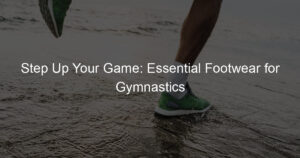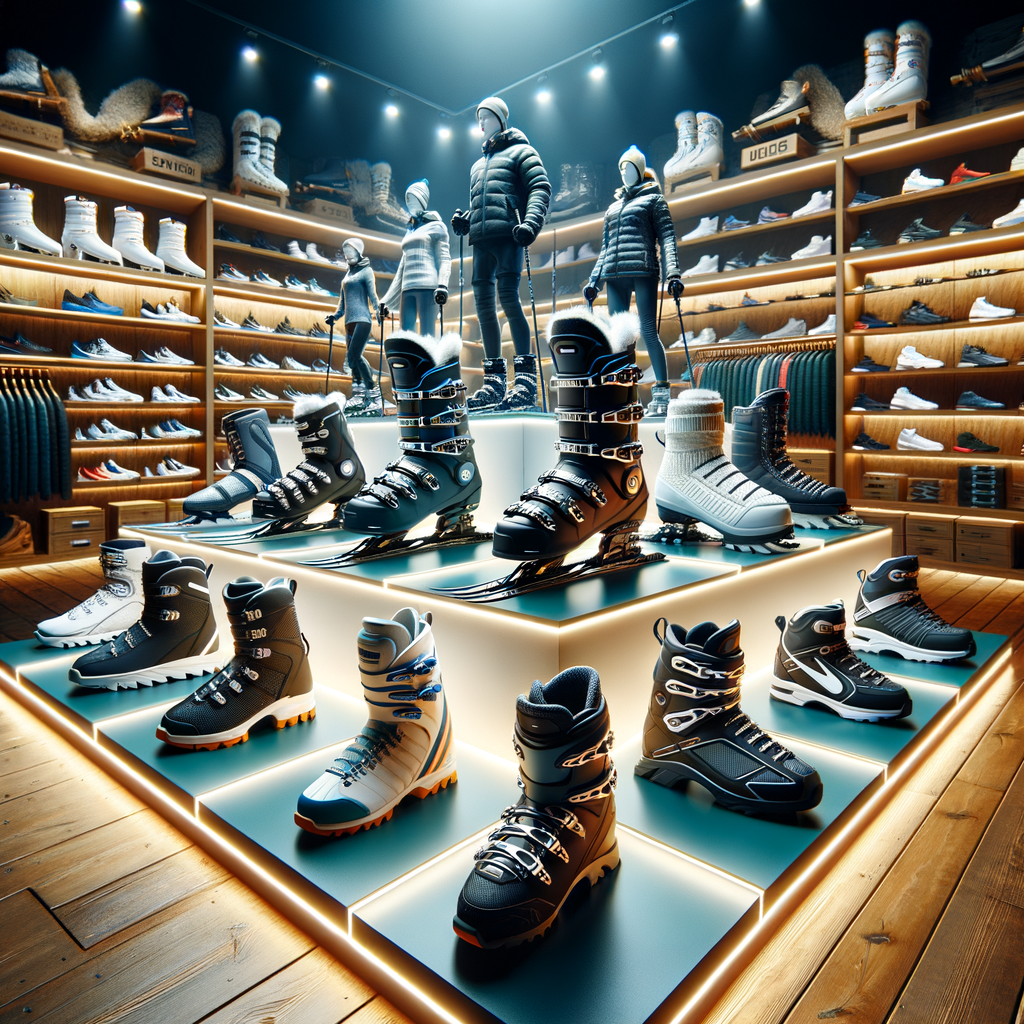
Introduction to Cross-Country Skiing Footwear
Before we delve into the world of cross-country skiing, it’s crucial to understand the importance of the right footwear. In this sport, your shoes can significantly influence your performance and overall experience. Let’s explore the basics of cross-country skiing shoes and why they matter.
- Importance of Proper Footwear in Cross-Country Skiing
- Impact of Skiing Shoes on Performance
- Understanding the Basics of Cross-Country Skiing Shoes
Choosing the right footwear is not just about comfort; it’s a matter of safety and performance. In cross-country skiing, your shoes are the primary connection between you and your skis. They provide the necessary control and stability to navigate through different terrains and snow conditions. Wearing ill-fitting or inappropriate shoes can lead to discomfort, injuries, and hinder your skiing performance.
Your skiing shoes can make or break your performance on the trails. They play a vital role in transferring your body’s power to the skis, allowing you to move efficiently and maintain balance. A well-fitted pair of skiing shoes can enhance your control over the skis, improve your technique, and ultimately, boost your performance. On the other hand, shoes that are too tight or too loose can restrict your movements and cause fatigue.
Cross-country skiing shoes are specifically designed to meet the demands of the sport. They are typically lightweight and flexible, with a low-cut design for maximum ankle movement. The soles of these shoes are rigid to ensure efficient power transfer to the skis. They also feature a binding system that securely attaches the shoe to the ski. When choosing your skiing shoes, consider factors like fit, comfort, insulation, and the type of binding system used on your skis.
In conclusion, the right footwear is a crucial component of your cross-country skiing gear. It not only ensures your safety and comfort but also significantly impacts your performance. By understanding the basics of cross-country skiing shoes, you can make an informed decision and enhance your skiing experience.
Essential Skiing Gear: The Role of Skiing Shoes
When it comes to skiing, having the right gear is crucial for both safety and performance. Among the various components of skiing gear, skiing shoes play a pivotal role. Let’s delve into the details.
- Components of skiing gear
Skiing gear consists of several components, each designed to enhance your skiing experience. This includes skis, ski poles, ski bindings, ski boots, ski helmet, ski goggles, and ski clothing. Each piece of equipment serves a specific purpose and contributes to your overall performance and safety on the slopes.
- Role of skiing shoes in the gear
Skiing shoes, also known as ski boots, are one of the most critical components of your skiing gear. They connect you to your skis, allowing you to control and maneuver them effectively. Good skiing shoes provide a snug fit, ensuring your feet stay warm and comfortable. They also protect your feet and ankles from potential injuries. In essence, skiing shoes act as a vital link between your body and your skis, enabling you to ski with precision and control.
- Choosing the right skiing shoes
Choosing the right skiing shoes can make a significant difference in your skiing experience. When selecting skiing shoes, consider factors such as your skiing style, skill level, and foot shape. The boots should fit snugly but comfortably, providing enough room for your toes to move. They should also offer good ankle support and have a sturdy, non-slip sole for optimal grip on the snow. Remember, the right pair of skiing shoes can enhance your performance and make your skiing experience more enjoyable.
In conclusion, skiing shoes are an essential part of your skiing gear. They play a crucial role in ensuring your safety and enhancing your performance on the slopes. Therefore, it’s important to invest in a good pair of skiing shoes that fit well and meet your skiing needs.
Best Shoes for Cross-Country Skiing: A Comprehensive Guide
When it comes to cross-country skiing, the right footwear can make all the difference. In this guide, we will explore the best shoes for this exhilarating winter sport.
Understanding the Types of Skiing Shoes
Before we delve into the specifics, it’s important to understand the different types of skiing shoes available. Each type is designed for a specific style of skiing, and choosing the right one can greatly enhance your performance and comfort on the slopes.
- Classic cross-country ski boots
- Skate ski boots
- Backcountry ski boots
These boots are designed for traditional cross-country skiing, where the skier keeps both skis parallel while moving. They are lightweight and flexible, offering excellent control and comfort. The soles are flat and thin, allowing for a natural foot movement.
Skate ski boots are used for skate skiing, a style that mimics ice-skating and requires different boots. These boots are stiffer and more supportive, especially around the ankles, to provide the necessary stability and power for the skating motion.
Backcountry ski boots are designed for off-trail or “backcountry” skiing. These boots are the most robust and durable, with a thicker sole and more insulation to protect against harsh conditions and rugged terrain.
Choosing the right type of boot depends on your skiing style and the conditions you’ll be skiing in. Remember, comfort and fit are just as important as the boot’s technical specifications. So, always try on several pairs before making your decision.
Top Skiing Shoe Brands
When it comes to cross-country skiing, the right footwear can make a significant difference. Here are some of the top brands that are trusted by professionals and beginners alike:
- Salomon: Salomon is a French company known for its high-quality outdoor sports gear. Their skiing shoes are praised for their comfort and durability. They offer a wide range of options, from beginner to advanced level, ensuring there’s a perfect fit for everyone.
- Alpina: Alpina is a Slovenian brand that has been in the business for over 70 years. They are renowned for their innovative designs and technology. Alpina’s skiing shoes are known for their excellent performance and reliability on the slopes.
- Rossignol: Rossignol, another French brand, has a rich history in the skiing industry. Their shoes are designed with the latest technology and materials, providing excellent grip and stability. Rossignol’s products are a favorite among many skiing enthusiasts.
- Fischer: Fischer is an Austrian brand that has been producing skiing equipment since 1924. Their shoes are designed for optimal performance, offering a great balance of comfort and control. Fischer’s skiing shoes are trusted by many professionals in the field.
Each of these brands offers a unique blend of quality, performance, and comfort. It’s important to try on several pairs and choose the one that fits best and meets your skiing needs. Remember, a good pair of skiing shoes is an investment in your safety and enjoyment on the slopes.
Winter Sports Footwear: Comparing Skiing Shoes and Snowboarding Boots
When it comes to winter sports, the right footwear can make all the difference. In this section, we will compare skiing shoes and snowboarding boots, looking at their design differences, performance, and how to choose between them.
- Design Differences
- Performance Comparison
- Choosing Between Skiing Shoes and Snowboarding Boots
Skiing shoes and snowboarding boots are designed differently to cater to the unique demands of each sport. Skiing shoes are typically narrower and more rigid, designed to provide the skier with control and precision. They often have a hard plastic shell for support and protection. On the other hand, snowboarding boots are softer and more flexible, allowing for a wider range of movement. They often have laces or quick-pull systems for a snug fit.
Both skiing shoes and snowboarding boots perform well in their respective sports. Skiing shoes offer excellent control, allowing skiers to make precise turns and maneuvers. They also provide good support and protection, reducing the risk of injury. Snowboarding boots, on the other hand, offer more flexibility, which is essential for tricks and jumps. They also provide good cushioning, making them comfortable for longer rides.
When choosing between skiing shoes and snowboarding boots, consider the sport you will be participating in, your skill level, and your personal comfort. If you are a beginner, you might find skiing shoes easier to learn with as they offer more control. However, if you prefer a more relaxed and flexible style, snowboarding boots might be a better choice. Always try on several pairs to find the one that fits you best.
In conclusion, both skiing shoes and snowboarding boots have their advantages and are designed to cater to different styles of winter sports. The choice between them depends on your personal preference, skill level, and the type of winter sport you wish to participate in.
Skiing Equipment: Maintenance and Care
Keeping your skiing equipment in top shape is essential for a safe and enjoyable skiing experience. One of the most important pieces of equipment that requires regular maintenance is your skiing shoes. Here, we will discuss the key steps to maintain your skiing shoes: cleaning, storage, and regular checks for wear and tear.
Maintaining Your Skiing Shoes
- Cleaning
- Storage
- Regular checks for wear and tear
Cleaning your skiing shoes is the first step to maintaining them. After each use, remove any dirt or snow from the shoes using a soft brush. Avoid using harsh chemicals or detergents as they can damage the material of the shoes. Instead, use a mild soap and warm water to clean the exterior. For the interior, remove the liners and air dry them separately to prevent the growth of bacteria and bad odors.
Proper storage of your skiing shoes can significantly extend their lifespan. Always store your shoes in a cool, dry place away from direct sunlight. Sunlight can cause the material to degrade over time. Before storing, make sure your shoes are completely dry to prevent mold and mildew. Using a shoe bag can protect your shoes from dust and other potential damage.
Regularly inspect your skiing shoes for signs of wear and tear. Look for any cracks, loose parts, or worn out soles. If you notice any significant damage, it may be time to replace your shoes. Regular checks can help you spot minor issues before they become major problems, ensuring your safety on the slopes.
In conclusion, maintaining your skiing shoes involves regular cleaning, proper storage, and frequent checks for wear and tear. By following these steps, you can ensure your shoes remain in good condition, providing you with the best possible skiing experience.
Replacing Your Skiing Shoes
Just like any other sports gear, skiing shoes also have a lifespan. Knowing when to replace them and how to choose your next pair is crucial for your safety and performance on the slopes.
- When to replace
- The soles are worn out or damaged.
- The liners have lost their cushioning.
- You’re feeling discomfort or pain when skiing.
- Your performance on the slopes is declining.
- Choosing your next pair
- Fit: Your shoes should fit snugly but comfortably. They should hold your feet securely without causing pain or discomfort.
- Flex: The flex of the shoe should match your skiing style and ability level. Beginners usually need a softer flex, while advanced skiers may prefer a stiffer flex.
- Features: Look for features that suit your needs, such as heat-moldable liners for a custom fit or walk mode for easier movement off the slopes.
Typically, skiing shoes should be replaced every 150-200 days of skiing. However, this can vary based on the quality of the shoes and how hard you ski. Signs that your shoes need replacing include:
Remember, worn-out shoes not only affect your performance but can also increase the risk of injuries.
When it’s time to replace your skiing shoes, consider the following:
Remember, the best skiing shoes for you are the ones that fit well and meet your specific skiing needs.
Cross-Country Skiing Shoe Reviews: What to Look For
When it comes to cross-country skiing, your footwear can make or break your experience. Therefore, it’s crucial to choose the right pair of shoes. Here are some key factors to consider when reading cross-country skiing shoe reviews:
- Comfort and Fit
Comfort is paramount in any sport, and cross-country skiing is no exception. Look for shoes that provide a snug fit without being too tight. They should also offer ample cushioning and support to keep your feet comfortable during long skiing sessions. Remember, a shoe that fits well not only enhances your performance but also reduces the risk of injuries.
- Durability
Given the demanding nature of cross-country skiing, your shoes should be able to withstand harsh weather conditions and rough terrains. Check the reviews for any mentions of the shoe’s durability. High-quality materials and solid construction are indicators of a durable shoe.
- Performance
Performance in cross-country skiing shoes is often gauged by their grip, stability, and flexibility. A good shoe will provide excellent traction and stability, allowing you to navigate through snowy trails with ease. Flexibility is also important as it enables your foot to move naturally, enhancing your overall skiing technique.
- Value for Money
Lastly, consider whether the shoe offers value for money. A high price tag doesn’t always equate to high quality. Compare the shoe’s price with its features, comfort, durability, and performance to determine if it’s worth the investment.
In conclusion, when looking at cross-country skiing shoe reviews, focus on comfort and fit, durability, performance, and value for money. By considering these factors, you can find a pair of shoes that will enhance your skiing experience and help you stride with confidence.
Conclusion: Striding with Confidence in Your Skiing Shoes
As we conclude our journey through the world of cross-country skiing shoes, it’s time to lace up your boots and stride with confidence. We’ve covered everything from the essential role of skiing shoes to the best options available on the market, and even compared them with snowboarding boots. Now, let’s recap the most important points and share some final thoughts.
- Recap of skiing shoe essentials
Skiing shoes are a critical part of your skiing gear. They provide the necessary support and control needed for a successful skiing experience. Remember, the best skiing shoes are those that fit perfectly, offer excellent insulation, and have a sturdy, high-quality build. Regular maintenance and care will ensure they last longer and perform better.
- Final thoughts on choosing the best shoes for cross-country skiing
Choosing the right pair of cross-country skiing shoes can be a game-changer. It’s not just about picking the most expensive or the most popular brand. It’s about finding the shoes that best suit your individual needs and skiing style. Consider factors like comfort, fit, insulation, and durability when making your choice. Remember, the best shoes are the ones that make you feel confident and comfortable on the slopes.
As we wrap up, remember this quote by famous skier, Jean-Claude Killy: “The best skier is the one having the most fun.” So, choose your shoes wisely, take care of them, and most importantly, enjoy every moment on the slopes.

